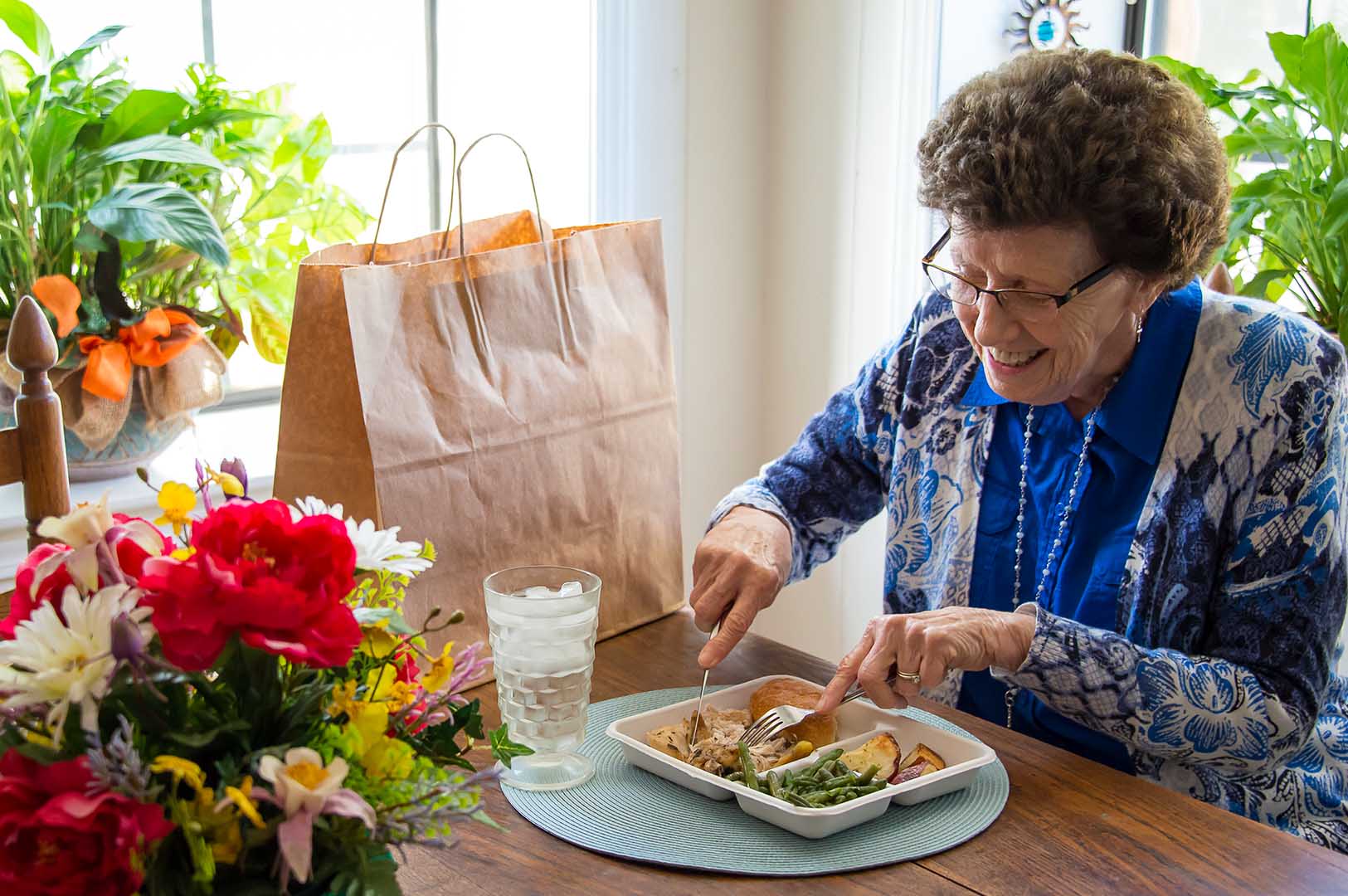The information presented on this page may be dated. It may refer to situations which have changed or people who are no longer affiliated with the university. It is archived as part of Mississippi State University's history.
Nationally, one in six seniors struggles with hunger, according to Meals on Wheels America. With 12,000 people turning age 60 every day that number is expected to continue to rise. By 2030, 20 percent of the U.S. population will be over the age of 65. Many of those individuals will be considered seniors with low access to food. Scientists and students in the Mississippi Agricultural and Forestry Experiment Station and the College of Agriculture and Life Sciences are investigating current trends in food access for seniors in order to help address hunger right here at home.
Low food access for rural seniors
Josh Turner, a recent doctoral candidate in human development and family studies with a gerontology emphasis, studied senior low access food as part of his doctoral dissertation. He was under the direction of Dr. Joe Wilmoth, associate professor in the School of Human Sciences and researcher with the Mississippi Agricultural and Forestry Experiment Station.
"Demographers see our aging population as a challenge for our economy and society, especially when it comes to making sure this population's basic needs like access to food are met," Turner said.
Turner analyzed data from the U.S. Census and the Department of Agriculture and determined factors that best predicted low food access among seniors in rural and non-metropolitan areas. Turner assessed all non-metropolitan counties in the contiguous 48 states, with more than 1,900 counties included in the sample. Turner used the U.S. Department of Agriculture's metric for low food access: a household's proximity to a supermarket.
"In urban areas, households a mile or further from a supermarket have low access to food. In a rural area, households ten miles or further from a supermarket have low food access," Turner explained. "If 50 percent or more of an area's households have low food access, it is considered to be a low food access area while 100 percent of low food access households deem the area a food desert."
Turner found that a persistent rate of county outmigration was the strongest predictor of an area being classified as a senior low food access county.
"When counties lose population, it may become harder for them to sustain adequate supermarkets. A county with a decreasing population is less likely to attract a large grocer and may even be in jeopardy of losing some of the grocers it already has," Turner explained.
Other predictors of low food access Turner identified included higher poverty rates and a higher proportion of minority residents. Additionally, counties with a higher proportion of older adults were more likely to be senior low food access counties.
Turner's work included a model for a possible intervention. The goals of the proposed intervention were three-fold. The short-term goal was to increase the knowledge of proper nutrition and available services for seniors and their caregivers through education. The medium-term goal was to see behavioral changes based on that increased body of knowledge, in the form of healthier nutritional choices and increased participation in accessing available services among seniors. The long-term goal was an ultimate reduction of low food access seniors in the area where the intervention program was implemented.
Turner said the caregiver component would be a vital part of any intervention.
"Involving informal caregivers like family members is important because these individuals will likely be helping their loved one access services," he said.
Turner hopes to build on the research by adding a qualitative piece.
"There is always more to learn about the situations that older adults are in. By adding a qualitative component; we might better understand what the day-to-day lives of seniors who have trouble accessing food are like. This insight may help us implement more targeted interventions."
Understanding the efficacy of Meals on Wheels
While Turner is studying low food access across the U.S., Dr. David Buys, assistant extension and research professor and scientist in the Mississippi Agricultural and Forestry Experiment Station, who specializes in gerontology, has long been interested in research focused on a particular program for food-insecure seniors: Meals on Wheels.
Currently, almost 20,000 Mississippi seniors are served through Meals on Wheels programs. Seventy-two percent of those individuals live in poverty; almost 50 percent belong to a minority group, and 80 percent live in a rural community. To be eligible, an individual must be 60 years of age or older and homebound. They must also complete a comprehensive initial assessment that accounts for nutrition risk, activities of daily living, and income among other factors. While there are reevaluations, most individuals receive the meals for a long period of time.
Buys was recently part of a team that conducted a systematic literature review on all available Meals on Wheels research. The team, which included University of Alabama at Birmingham scientists Anthony D. Campbell, Alice Godfryd, and Dr. Julie L. Locher, sought to determine a baseline for the state of science of Meals on Wheels research.
The team found 80 articles that met the review's criteria. To be included, the studies had to be peer-reviewed or a dissertation thesis, written in or translated to English, and examine some aspect of home-delivered meals and any outcome.
Buys said that while much of the literature demonstrated that home-delivered meal programs may contribute to the improved health and independence of senior adults, more rigorous science is needed.
To contribute to that body of science, Buys is currently partnering with Morrison Healthcare, the company that provides nutrition services for OCH Regional Medical Center. The researchers are currently enrolling individuals into a feasibility study in order to determine whether frozen meals given to seniors on hospital discharge will decrease the rate of hospital readmissions. This is a follow-up to a study he completed two years ago where he conducted a randomized controlled trial, exploring home-delivered meals for nutritionally at-risk older adults and showed the feasibility of such a study.
"The Affordable Care Act established the Hospital Readmissions Reduction Program in 2012," Buys explained. "This act reduces payments to hospitals that have excessive readmissions. In response, many hospitals have started implementing hospital-to-home transition programs, some of which include home-delivered meals, in an effort to reduce avoidable readmissions."
Once the team has enough enrollees, researchers hope to study the impacts these meals make on patients recently discharged from the hospital over a short period of time.
"We hope to better understand if providing extra nutritional support after discharge from the hospital would provide a higher impact over a shorter period of time, relative to longer programs like Meals on Wheels, resulting in fewer hospital readmissions," Buys said.
Buys pointed out that for programs like Meals on Wheels to fire on all cylinders, stakeholders need to take into account both quality of life factors along with cost.
"You have qualitative values you are trying to assess, factors like loneliness, which affect an individual's quality of life and then you have the bottom line when it comes to costs and results. It's important that we consider both," Buys said. "Accountability to those funding these services, be them hospitals, nutrition services companies, insurance, or taxpayers via the government, is essential. We have to assess the costs and efficacy of programs such as these; however, it is possible to continue to have both accountability and to expand services at the same time."


